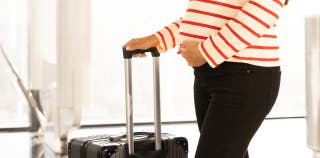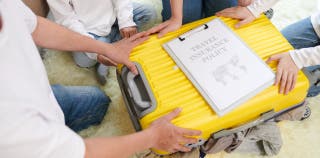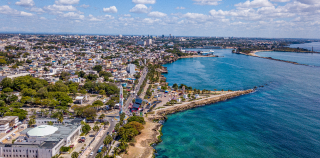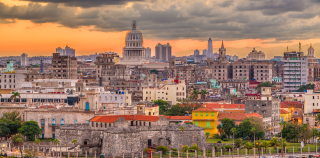- To travel to Australia, you must have a valid U.S. passport, but you don’t need a visa.
- The Australian government doesn’t require American tourists to purchase travel insurance, but it’s wise to have at least medical and medical evacuation coverage since your U.S. health insurance won’t work in Australia.
- In addition to medical emergencies, travel insurance can also cover things like trip cancellations, trip interruptions and rental car damage.
- According to our research, our top picks for travel insurance for Australia come from Travel Insured, Travelex and Faye (skip ahead to view these plans).
- We recommend using an online comparison tool to find the best travel insurance policy to suit your needs.
On This Page
- Key takeaways
- Do I need travel insurance to visit Australia?
- Best travel coverage for visiting Australia
- What does travel insurance for Australia cover?
- What isn’t covered by travel insurance for Australia?
- How much does travel insurance for Australia cost?
- Tips for getting the best Australia travel insurance
- Australia travel information & requirements
- Australia travel insurance FAQs
- Related topics
On This Page
- Key takeaways
- Do I need travel insurance to visit Australia?
- Best travel coverage for visiting Australia
- What does travel insurance for Australia cover?
- What isn’t covered by travel insurance for Australia?
- How much does travel insurance for Australia cost?
- Tips for getting the best Australia travel insurance
- Australia travel information & requirements
- Australia travel insurance FAQs
- Related topics
Australia Travel Insurance: Trip Info & Quotes for U.S. Visitors
Our top picks for the best australia travel insurance
Our top picks for travel insurance for Australia
Travel Insured International
Travelex Insurance Services
Faye Travel Insurance
Do I need travel insurance to visit Australia?
Australia doesn’t require U.S. tourists to buy travel insurance, but we highly recommend purchasing a comprehensive policy before your trip commences.
Below are some risks you may encounter that would make purchasing travel insurance worthwhile.
Risks with adventure activities
Australia is one of the best places to visit if you love parasailing, paragliding, hot air ballooning, diving and other adventure activities. Unfortunately, these activities are risky, so there’s a chance that you’ll break a bone or sustain some other type of injury.
Travel insurance covers medical expenses and other costs associated with these injuries, ensuring you don’t end up with a huge hospital bill. This type of insurance is especially helpful if you plan to explore the Great Barrier Reef, take an excursion into the Outback or swim near the shoreline of one of Australia’s beautiful beaches.
Risks due to wildlife
Australia is full of dangerous critters, from venomous spiders and snakes to aggressive kangaroos. Depending on where you visit, you may end up encountering an unfriendly Tasmanian devil. U.S. medical insurance typically doesn’t work in Australia, so it’s important to have travel insurance for these unexpected situations. If you’re bitten by a Tasmanian devil or sustain some other wildlife-related injury, travel insurance takes the place of your regular medical insurance.
Risks due to bushfires
Bushfires have a high heat output and can cause a significant amount of damage in a short amount of time. If you find yourself in Australia during one of these fires, you may have to contend with damage to your rental car or your personal belongings. Comprehensive travel insurance may reimburse you for damaged or destroyed items, or it may reimburse your rental car agency for the cost of repairing or replacing a damaged vehicle.
Risks related to long-distance driving
Australia has many isolated regions that are hundreds of miles from the nearest populated area. You may have to drive several hundred miles to reach your destination, so it’s important to have travel insurance before you set off on an adventure.
Best travel coverage for visiting Australia
Best for Robust Coverage
Travel Insured International
Why We Like It
PROS
- Travel delay coverage kicks in after just six hours
- Generous $150,000 non-medical evacuation coverage
- 24/7 emergency travel assistance included
CONS
- CFAR and IFAR coverage not included
- Baggage delay coverage only kicks in after 12 hours
- No rental car coverage
Best for Basic Medical Coverage
Travelex Insurance Services
Why We Like It
PROS
- Plans can be customized with upgrades
- Children 17 and under included for free with some plans
- Coverage for pre-existing medical conditions available
- CFAR coverage is available as an add-on to a comprehensive travel insurance plan
CONS
- Optional CFAR coverage only reimburses 50% of prepaid travel expenses, which is less than some competitors
- Travel Select plan only has $50,000 in coverage for emergency medical expenses, which is lower than some competitors
- The baggage delay benefit requires a 12-hour waiting period
- CFAR coverage is not available with all Travelex plans
Best for Digital Claims Process & App
Faye Travel Insurance
Why We Like It
Editor's take
Faye is a new travel insurance disruptor that offers an innovative solution to travel insurance with a digital-first approach. What sets them apart is their user-friendly solution to a traditionally bureaucratic system. With Faye, users can manage everything online or via the Faye app – including the entire booking and claims process. Although it’s a newer provider in the travel insurance industry, Faye is already rising as a fan favorite among young, tech-savvy travelers and digital nomads who want quick, convenient, and reliable travel insurance without having to go through an agent.
Apart from their online-first approach, Faye is easy to use and caters to all types of travelers including those who may want help via phone support.
Another feature that sets Faye apart from the competition is their plan offerings. Faye offers one base plan with an array of comprehensive coverage and optional add-ons to customize your plan.
Potential Add-ons include:
- Pet care
- Rental car care
- Cancel for any reason
- Vacation rental damage
- Adventure & extreme sports
If you are looking for a convenient and cost-effective way to insure your vacation, consider opting for Faye travel insurance. *Note: Coverage limits and availability may vary by state of residence.
PROS
- Friendly agents
- Easy-to-use mobile app
- Fast reimbursements for eligible claims
- Prompt replies to questions
CONS
- Long wait times for reimbursement
- Difficulty reaching Faye outside of email & virtual chat
What does travel insurance for Australia cover?
Travel insurance can cover a wide range of circumstances, but each plan has different inclusions and exclusions. Here is a look at the most important types of travel insurance coverage to consider getting when visiting Australia.
Trip cancellation insurance
Australia is far away and is a developed nation on par with the United States. That means trips to Australia are usually quite expensive. It’s never fun to cancel a vacation you’ve been looking forward to for months, but it’s even worse when a cancellation results in significant financial losses.
Trip cancellation insurance protects you if you have to cancel your trip to Australia for a reason stipulated in the policy. For example, if one of your travel companions is diagnosed with a serious illness before your departure date, you can use your insurance to recoup pre-paid, nonrefundable trip expenses.
If you want to have coverage for any type of circumstance, you can also purchase cancel for any reason (CFAR) insurance. Typically sold as an add-on, this type of coverage will reimburse you for around 50% to 70% of your total prepaid costs.
Trip delay insurance
To get to Australia, you may have to rely on the services of multiple common carriers. For example, you may have to fly to Australia and then take a ferry to your final destination. Trip delay insurance reimburses you for any expenses you incur as the result of a common carrier delay. If your flight is canceled, for example, your insurer may reimburse you for meals, a hotel, additional transportation costs, and other related expenses.
Trip interruption insurance
Imagine that you arrive in Australia, enjoy a few days of fun and then come down with a severe illness. You’re so sick that you have to return to the United States sooner than expected. Trip interruption insurance reimburses your pre-paid, nonrefundable expenses in this type of scenario. It should also cover the cost of adjusting your travel plans or accessing emergency assistance services.
Travel medical insurance
As noted previously, it’s unlikely you will be be able to use your U.S. health insurance in Australia. Therefore, it’s important to have travel medical insurance to cover things like urgent care, hospitalization, blood tests, CT scans and other healthcare services. If you’re injured while snorkeling or suddenly develop appendicitis during your trip, you can rest easy knowing that your medical expenses are covered.
Medical evacuation insurance
If you’re injured in the Outback, you can’t exactly hop in a cab and get to a hospital within a few minutes. Medical evacuation insurance covers the cost of transporting you to a healthcare facility that’s capable of meeting your needs. For example, if you need emergency assistance, your policy may cover the cost of air medical services (like helicopter transportation).
Insurance for personal items
We recommend that you leave your valuables at home, but if you just have to take jewelry, designer clothing or expensive sports equipment on your trip, make sure your travel insurance includes coverage for lost, stolen and damaged items. This type of coverage reimburses you if a common carrier loses or damages your luggage or its contents.
Rental car coverage
Rental car coverage can protect you under the following circumstances:
- You’re involved in an auto accident caused by someone else.
- Someone vandalizes your rental vehicle.
- Someone steals your rental vehicle.
If your policy includes this type of coverage, your insurer will reimburse the rental agency any time you experience a covered loss. For example, if you get into a fender-bender in one of Sydney’s famous traffic jams, your insurance company should reimburse the rental agency for the cost of repairs.
What isn’t covered by travel insurance for Australia?
Travel insurance for Australia doesn’t cover the following:
- Pre-existing conditions: If you’re diagnosed with a medical condition like asthma or diabetes before you buy your travel insurance, your insurer won’t pay for medical expenses associated with that diagnosis. In some cases, however, you can opt for a plan with a waiver. This can ensure coverage for pre-existing conditions during your trip.
- Illegal activities: Travel insurance doesn’t cover expenses arising from any illegal activities, such as injuries that occur while under the influence of illicit substances.
- Fear of travel: If you book a trip and then suddenly develop a fear of flying, your insurance company won’t reimburse you for your pre-paid expenses. The same applies to a fear of seeing a spider or encountering a Tasmanian devil during your trip.
- Expected events: Travel insurance doesn’t cover expenses associated with events that you knew about (or should have known about) before a trip. For example, if you book a trip and buy insurance after a named storm has started developing, your insurer won’t reimburse you if the storm forces you to cancel or interrupt your trip.
How much does travel insurance for Australia cost?
For a trip to Australia, we found that the cost of travel insurance ranges from less than $1 per day to around $11 per day depending on the type of coverage.
To give you a better idea, we requested multiple quotes from leading travel insurance providers.
These quotes are based on the following criteria:
- Age: 35 years old
- Destination: Australia
- Trip Length: 7 days
- Trip cost: $2,000
You can see our quotes for basic travel insurance in the following table. The cheapest travel insurance plan costs just under $1 per day.
Example Where Plan Doesn’t Reimburse the Full Trip Cost
| Provider | Plan Name | Plan Cost | Cancellation / Interruption Limits | Medical / Medevac Limits |
|---|---|---|---|---|
| Tin Leg | Standard | $5 | $0 / $0 | $30k / $200k |
| Trawick International | Safe Travels Explorer | $20 | $0 / $0 | $50k / $200k |
| Seven Corners | Trip Protection Basic | $25 | $0 / $1k | $100k / $250k |
| AXA Assistance USA | Silver | $42 | $0 / $500 | $25k / $100k |
The plans in this next table are more comprehensive. In addition to medical and medical evacuation coverage, they also include trip cancellation and trip interruption coverage. According to our quotes, these plans cost between $7 and $11 per day.
Example Where Plan Does Reimburse the Full Trip Cost
| Provider | Plan Name | Plan Cost | Cancellation / Interruption Limits | Medical / Medevac Limits |
|---|---|---|---|---|
| Tin Leg | Standard | $46 | $2k / $3k | $30k / $200k |
| Trawick International | Safe Travels Explorer | $59 | $2k / $2k | $50k / $200k |
| Seven Corners | Trip Protection Basic | $75 | $2k / $2k | $100k / $250k |
| AXA Assistance USA | Silver | $69 | $2k / $2k | $25k / $100k |
Your costs won’t be exactly the same, as insurance companies base their premiums on these factors:
- Trip cost: Insurance companies reimburse you for up to 100% of your prepaid, nonrefundable expenses. The more your trip costs, the more your insurance provider has to pay you if you experience a covered loss. Therefore, the cost of your insurance plan depends on the cost of your trip.
- Age: Older people are more likely to develop serious medical problems while traveling, so it costs more to insure a 60-year-old or 70-year-old traveler than it does to insure someone in their 20s.
- Insurance benefits: Some travel insurance plans come with more benefits than others. For example, a plan that offers $1 million in medical evacuation coverage will cost more than a plan that comes with only $100,000 in medical evacuation coverage.
- Destination: Some destinations are riskier than others, so insurance companies charge different rates based on your itinerary.
- Add-on coverage: You may need to purchase add-on coverage, such as insurance for adventure activities. If so, you’ll pay an additional premium for the extra benefits.
Tips for getting the best Australia travel insurance
To find the best travel insurance for your needs, follow these tips:
Consider how you’re getting to and around Australia.
You’ll have to take an airplane from the United States to Australia, but depending on your plans, you may also need to ride a train or take a ferry at some point. The more carriers you use, the more likely you are to experience delays and other problems, increasing the amount of coverage needed.
Think carefully about what you plan to do.
If you want to visit the Sydney Opera House and check out the Australian Museum, you won’t need as much coverage as someone who plans to camp in the Outback or go parasailing over the Gold Coast. You may also want to limit your cancellation costs by purchasing cancel-for-any-reason coverage.
Time your purchase carefully.
Although you can buy Overseas Visitors Cover when you arrive, it’s typically cheaper to purchase travel insurance well in advance of your trip.
Australia travel information & requirements
| Query | Details |
|---|---|
| Tourist visa required? | Yes |
| Passport requirements | Valid U.S. passport with at least one blank page |
| Local currency | Australian dollar (AUD) |
| Language | English |
| Exchange rate | 1 USD = 1.53 USD |
| Vaccine requirements | None |
| COVID-19 test required? | No |
| Travel advisory level | Level 1- Exercise Normal Precautions |
| Emergency services phone number | 000 |
| Accepts U.S. health insurance? | No |
| Travel insurance required? | No |
Are there COVID-19 restrictions for U.S. tourists?
No. Australia has no COVID-19-related restrictions for American travelers. However, the Australian government does recommend getting the COVID-19 vaccine, wearing masks and practicing good hygiene.
Do I need a visa or passport to travel to Australia?
Yes. You need a valid U.S. passport with at least one blank page for your entry stamp.
Is it safe to visit Australia?
The United States and Australia have a strong diplomatic relationship. Although there’s always some level of risk involved in traveling to a foreign country, Australia is generally safe for Americans. The U.S. Department of State has issued a Level 1 travel advisory, indicating that you don’t need to take any special safety precautions when visiting the “Land Down Under.”
Australia travel insurance FAQs
What travel insurance do I need to travel to Australia?
You’re not required to purchase travel insurance for Australia, but we highly recommend that you do. You never know when you’re going to have an emergency or encounter some kind of problem during a trip. To find the right policy to suit your needs, try using an online comparison tool.
Does American health insurance work in Australia?
In most cases, no. Medicare and Medicaid only work in the United States, and most private health insurance companies will only cover expenses if you use U.S. medical facilities.
Can foreigners buy travel insurance in Australia?
When you travel to Australia, you have the option of buying Overseas Visitors Cover. However, not many companies provide this type of coverage. There may also be waiting periods for medical coverage. Therefore, we recommend that you buy travel insurance before you leave the United States.






























































